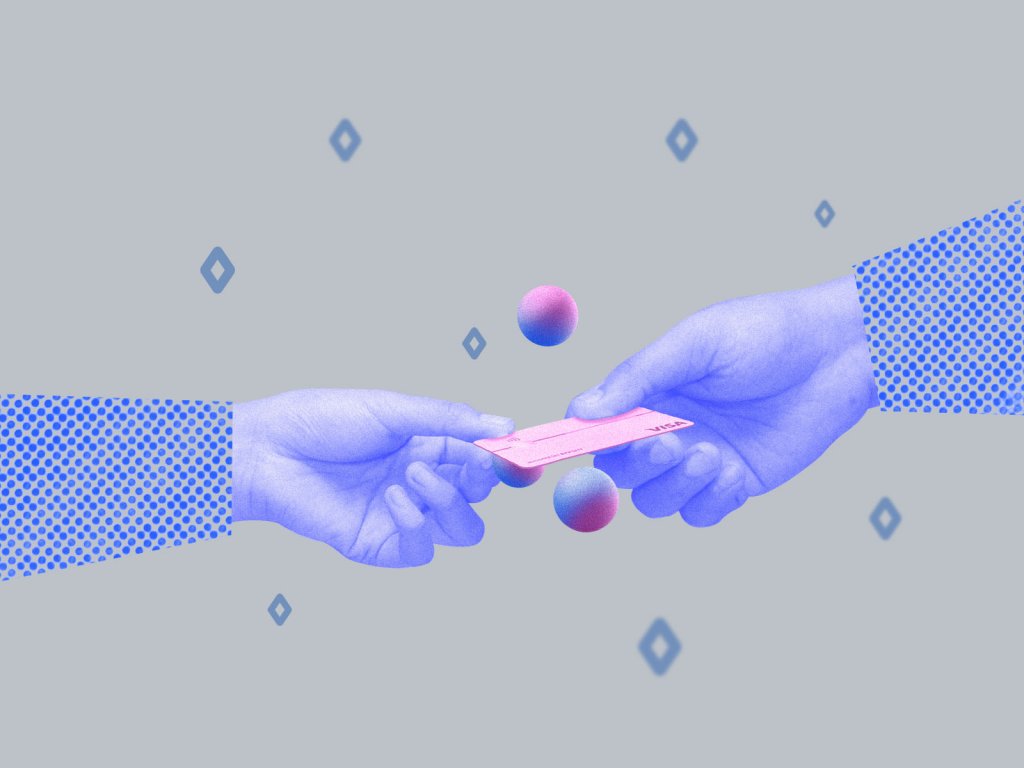It’s never a secret that all the occupations are more or less surrounded by some stereotypes and common thoughts on both a job and a professional. None of the jobs in the sphere of web and app design can avoid this stuff, so let’s look into some stereotypes about designers and try to justify or disprove them with our own experience.
Stereotype 1. Designers are usually messy and untidy (as well as other creative guys).
There are decades or even centuries of thoughts that real creators are people never bothering about housework or other chores. They are believed to be out-of-earth, flying in their dreams and projects far from wasting time on putting things in their places. And for some people of the trade it can be true, but, being honest, most of them are rather far from success and fame.
Successful designers are always busy. Having their hands full, they have to be productive. That means they can never allow themselves to be untidy and messy because that is the death knell of their productivity. Design needs not only creativity but also deep concentration and thorough focus. Getting distracted from the process to find something as decent as a pencil not returned at its place will slow down the designer noticeably. When it happens several times a day or (no way!) an hour, you can forget about speed. Speed and efficiency mean more work, more customers and that is more money. Time is money, no joke. So why lose it in a mess?
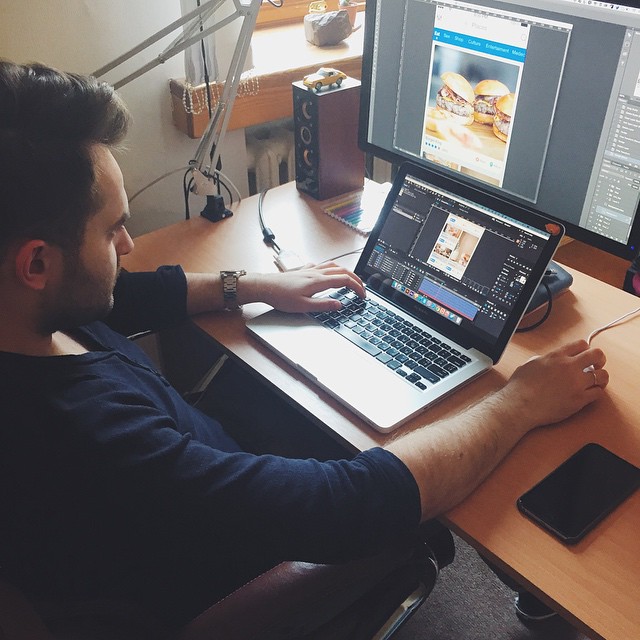
Tubik Studio CEO Sergey Valiukh working on the project: nothing distracting, pure concentration.
The same should be said about the mess in a computer brain. Working with any project, a designer has to accomplish tons of updates. And if you are good at your craft, you are going to have several projects at the same time. That means that you HAVE to be organized and teach yourself to keep everything in order. Otherwise, one day you’ll get stuck in loads of files, subfiles and “the-newest-very-final” files on your desktop. In this case, deadlines are literally going to become dead.
Experienced designers often say that even your desk should be as tidy as possible because nothing should distract you, breaking your concentration. A cluttered desk means cluttered head for many people. Think about it organizing your working space.

Tip: Want to be productive? Keep mess as far from your desk, computer, and brain as possible.
Stereotype 2. Customer is always right
This thought is typical not only for the sphere of web and app design but for any field where you create or sell products for customers. Although, in the area of web and app design (maybe more often than in others) this rule doesn’t work in every case and context. This happens because the customers mostly see the product from their own perspective, with the target of profit or conversions as the priority. It is natural that customers will think about their own benefits. But, keep in mind, the customer is mostly not the final user of the product. And the aim of a designer is to view the task from the perspective of future users, otherwise, the customer’s priority will be failed.
So, it is very important to work in tight collaboration and always remember: your customer doesn’t have to know all the nuances and peculiarities of the design process. That is why THEY are customers and YOU are a designer. Be attentive and sensitive to everything that your customers want, but don’t let it go beyond the limits of reasonability and sensibility.
Don’t be too soft but at the same time don’t be too hard. If you are too gentle or just indifferent, if you only follow your customer’s wishes not analyzing whether they are potentially efficient, you risk not creating a good working product that will make your name and bring you more customers. If you are too hard, your customer will feel you are too intrusive and bossy, so not respectful enough to your client — and you risk not only losing this particular project but also getting notorious through word-of-mouth references from customers. Therefore, it is vital to find a happy medium.
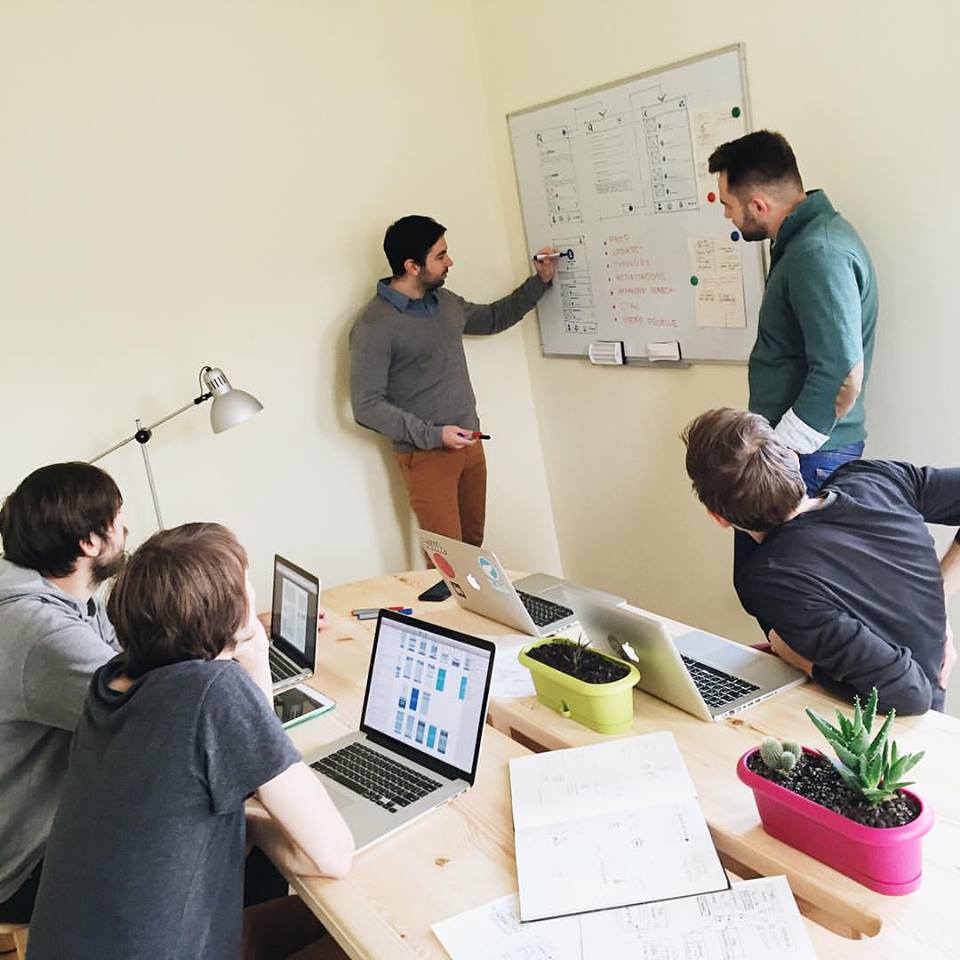
Regular brainstorming session at the studio
Moreover, the thing, which has been practically checked by studio designers, is the idea that communicating with your customers you should get not only his wishes but also try to get the ideas and reasons for these wishes. If you understand why your customer wants to see particular colors, shapes or transitions, it will be easier for you (if necessary) to justify other methods of realization of these ideas which would give the result desired by the customer.
As a piece of a practical example, we have written about the process of collaboration with designers in the case study for the Ribbet logo.
Tip: Be attentive to your customers. Be honest with your customers. Be helpful to your customers.
Never say: I am a designer, I know how to do it better — that is not the explanation of anything even if it’s one thousand percent true.
Never say: I am just a designer, I will do anything you want (and that is not my problem if your ideas and wishes do not work).
Justify, explain and keep your head high.
Your customers MAY be not right, but they HAVE to be satisfied and that is YOUR job.
Stereotype 3. Designer needs to work alone for the highest productivity
Again, the first note to make should be “It is highly individual”. There are people in any creative job who are absolutely unable to work in a team and give the best result when they are not disturbed by other people. However, on the basis of practice, teamwork is a great way for productivity in the sphere of design.
Sure, it is much simpler just to get several designers sitting together in the same room, staring at their own computer screens and not talking to each other for ages. They will be effective workers, but their effectiveness will be limited to the edges of their own desk, so the success of the company will be created by the number of individual separate energies. Well, why not?
Nevertheless, if you get them together as a united collective mind, it will be far more efficient. Believe us, we’ve checked. Working in the team doesn’t mean losing individual creativity or fame — vice versa, it up-sizes designers’ individual abilities and makes them work faster and more productively. Working in the team, you can gather your colleagues for a brainstorm session, you are always able to ask for advice or share the newest information and practical skills valuable for the whole team.
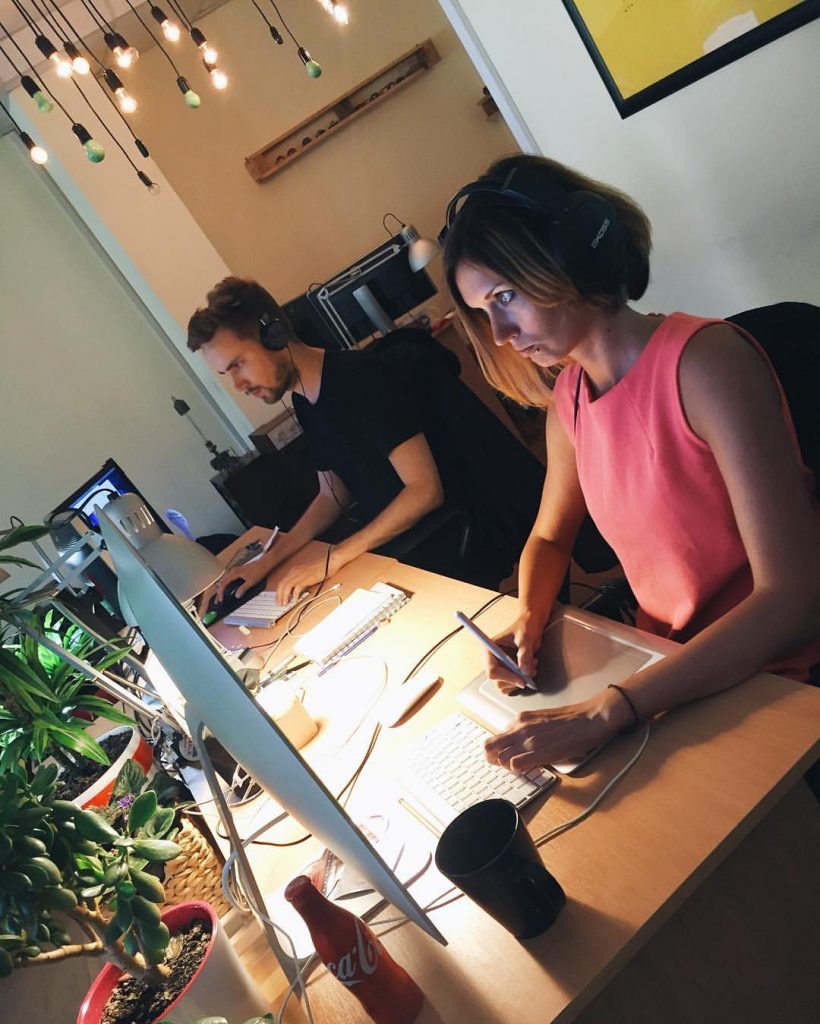
Tubik Studio design team: individual work always combined with tight collaboration and support
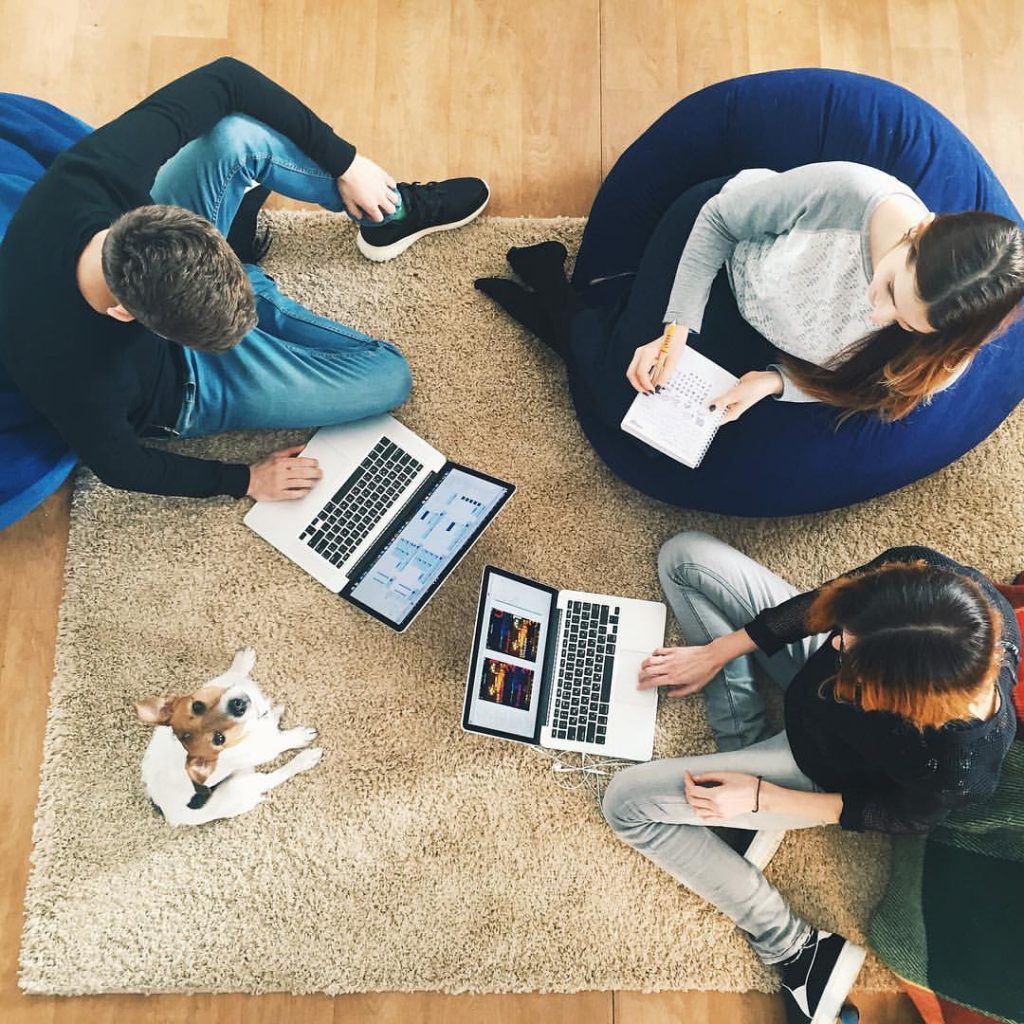

Sharing and discussion is the part of the working routine
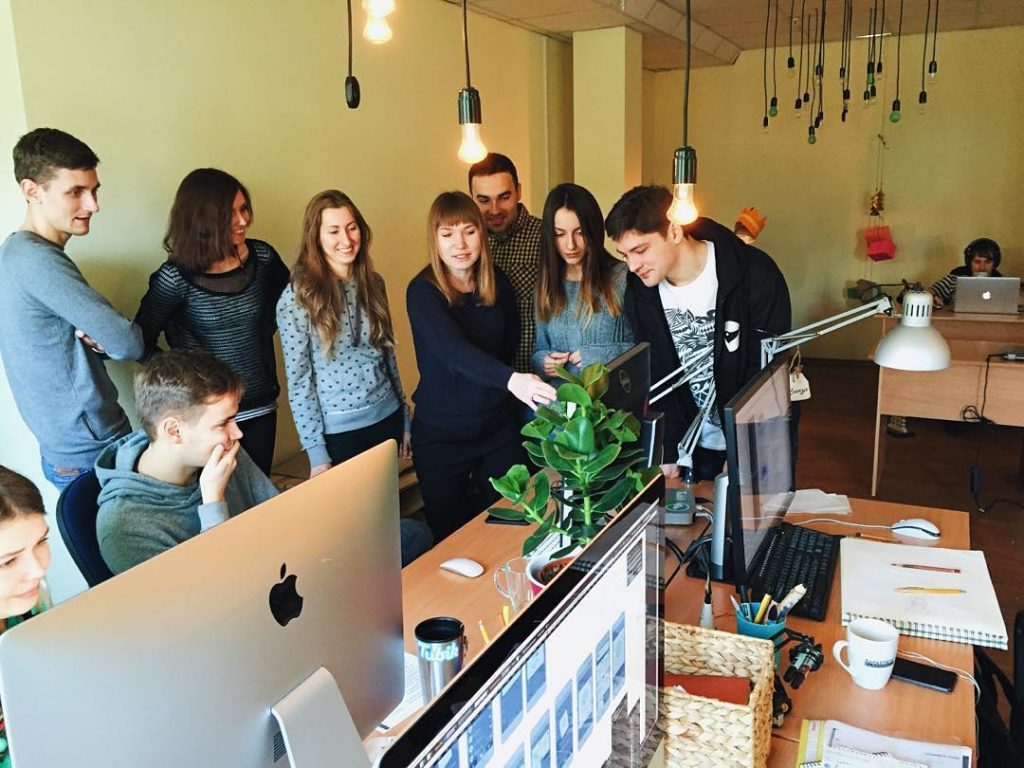
Feeling the power of the collective mind
Tip: You can work alone if you want, and it will never make you weak or inefficient. But work in the team of soul mates will make you even stronger and faster in your job.
Read more about the benefits and responsibilities of teamwork and freelancing in design
Stereotype 4. The idea is a key
Talking about the nature of the design process, there is a common thought among both designers and non-designers that the most essential and focal thing in any project is to invent (find, discover, work out) the idea. If you have a brilliant idea — you are halfway (or even closer) to success.
Practice shows that reality is very different. Your idea may seem absolutely brilliant for the first five seconds, hours or days, and you can give yourself some time to be proud of your own geniality. However, then there will come the moment when you will have to consider your idea. And, for example, simple research can reveal that there are several more geniuses around having come up with the same idea. That doesn’t make your one worse — it just shows that it is not unique and to make it original you will have to apply some more efforts. Moreover, your customers may not share your vision. There can appear awful difficulties in the practical realization of a new concept. So, the invention of the idea doesn’t automatically mean that it will bring the successful result.
Considering the specific features of the web/app design job, there also can be the problem that the amazing design of the interface, great animation or bright branding elements in practice can become a total failure from the user’s perspective. If you don’t want it to happen, you should be ready to research, design, analyze, iterate and maybe even redesign. We have told about it in detail in our case study on designing UX/UI for Echo project.
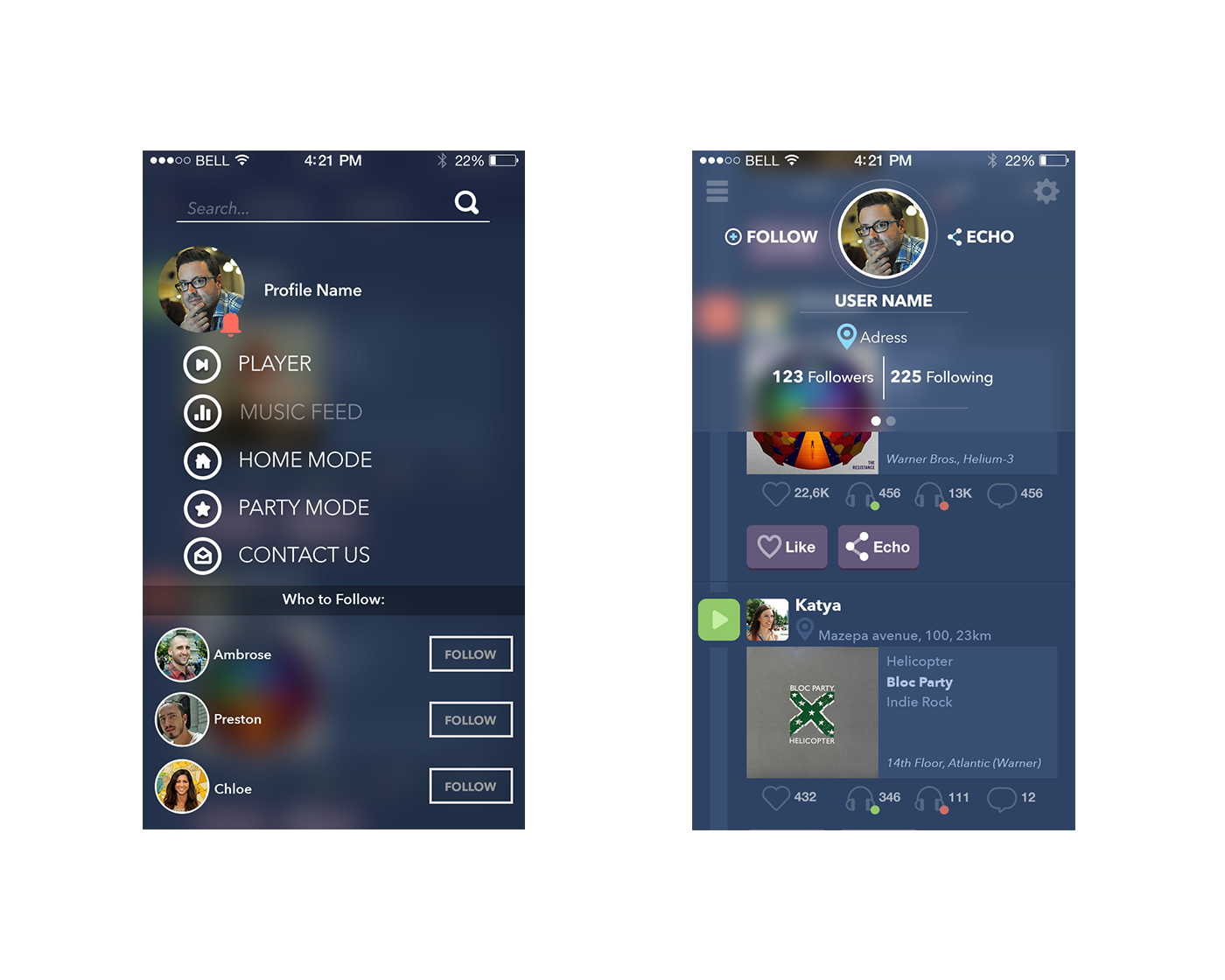
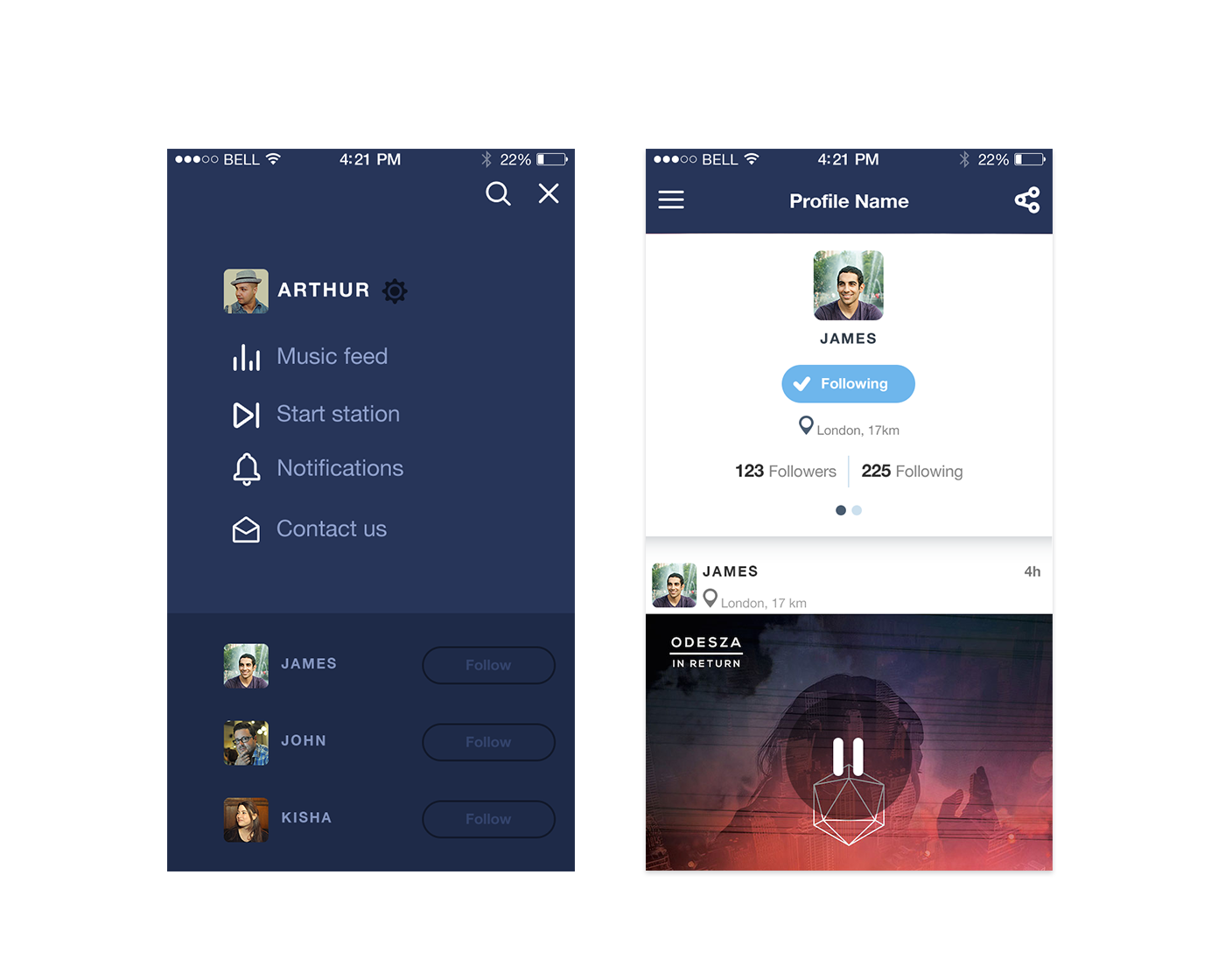
Design and redesign of a user interface for the Echo project

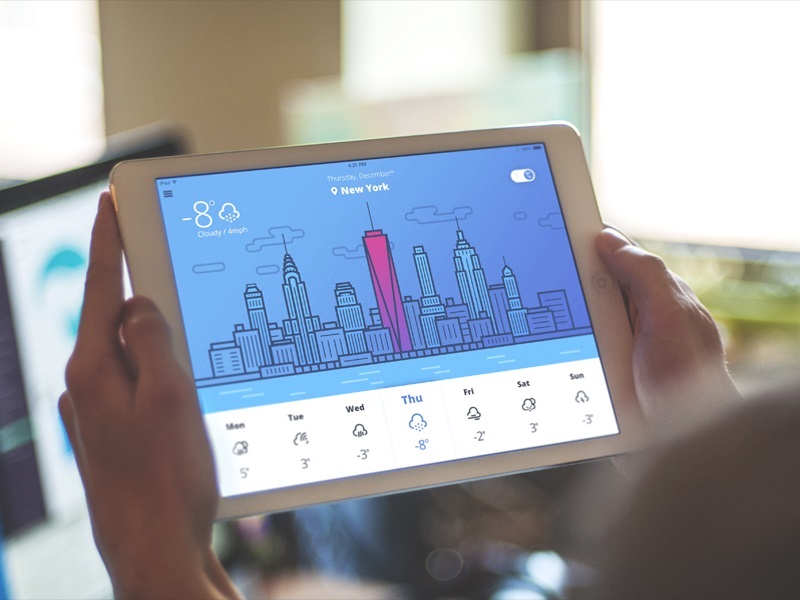
Hours of thoughtful work and iterations lie between the idea and the final presentation of the app
Therefore, the idea is a key, but you have to rotate it a hundred or even a thousand times with hard work so that you could open the door to success.
Tip: Don’t relax after creating the idea. It’s not the time to open a bottle of champagne and celebrate anything. Be ready that most effort is ahead.
Only hard work and its results will show if your idea was the right key to the right door.
Stereotype 5. Creating the concept is faster and easier than working it out
There are tons of legends about master artisans who need short seconds for creating immortal concepts for any idea or task. In practice, it is impossible to predict how much time a designer will need to create the concept — seconds, minutes, hours or even days.
![]()
![]()
Design of the concept and working out the details is not really a piece of cake: working on a set of romantic icons
Given to unbelievably high speed of design development, creating efficient, practical, original and unique concept for a project in the sphere of web/app design often demands a long process of thorough research of competitors, attempts and working out loads of variants before there will be found the one which will satisfy all the sides of the process: the designer, the customer and the user. And when the concept has already been worked out and agreed upon, the process becomes more technical, logical and predictable, so it is easier to calculate timing.
Therefore, sometimes creating the concept is easy and fast, but in other cases, it is the much harder and demanding assignment to come up with the solution of the concept than technically realize it.
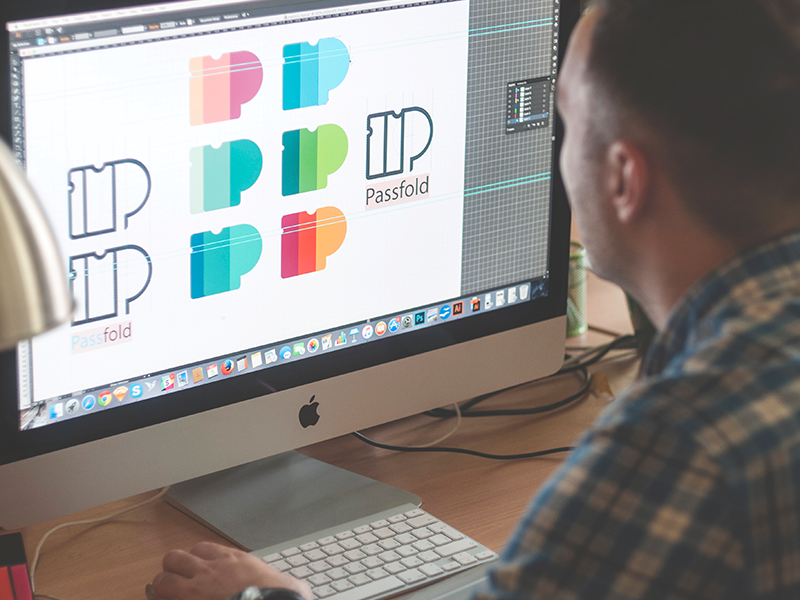
Working out a logo
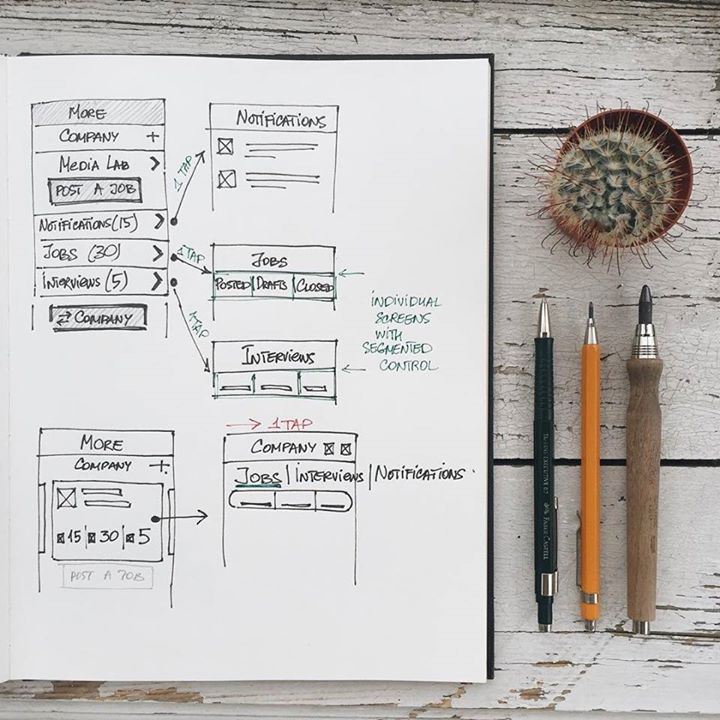
First sketches for a landing page
Tip: Creating the concept, consider all the moments and details which will enable you to simplify and speed up the process of its efficient realization.
Read more tips from the studio team for the beginner designers





